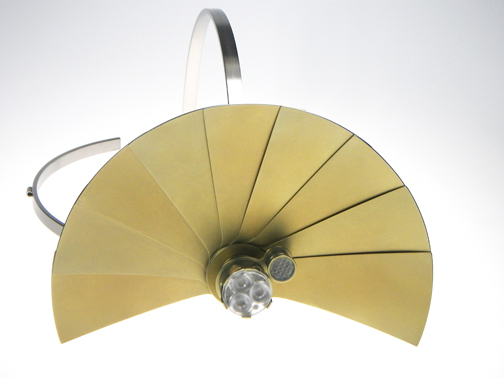Il design italiano incontra il gioiello
July 2 – September 8, 2013
The Triennale Design Museum in Milan presents a large exhibition dedicated to the jewel of Italian designers, curated by Alba Cappellieri and Marco Romanelli. The exhibition covers a time span ranging from the 1950s to the present day, through styles and changing times, from the Post Modern Rationalism up to Minimalism: a path of generational leaps that include great masters and young designers, industrial production and unique pieces. The curatorial hypothesis consists of two parts: a historical review with a number of new projects presented for the first time in Milan, and a section with jewelry designed and created especially for the exhibition.
Silvana Annichiarico, director of the Triennale Design Museum, states that, “Since the 1930s, the history of the Triennale of Milan is full of emblematic episodes and intelligent precursors in claiming a relationship between unconventional design and gold work, above all, with the jewelery. Taking up this great tradition, Triennale Design Museum in 2004 re-introduced a special attention to the subject of the jewel with the exhibition The Design of Joy, in the following years, a new player in the jewelry designer section in The New Italian Design (traveling exhibition, 2007 to present), and exhibitions Paper Jewelry (2009), Jewels for Milan (2011), and The Sustainable Jewel of Dalisi Riccardo (2012). For a long time the world of design has pretended not to consider jewels. They were often relegated to the limbo of ornament or decorum, and dismissed from their own universe of design as dangerous temptations, as heretical deviations, as indications of that ‘criminality’ that Adolf Loos denounced in any derailment of the designer to the sphere of the ornamental, the superfluous, dell’orpello. In fact, if the jewelry serves (and has served historically) to define the identity of the wearer, it is very questionable attempt to relegate the sphere of the superfluous, unless you believe everything that is functional to the construction of less useful or less noble than that which is functional to meet the needs “primary” of the body. Of that body, on the other, that in addition to eating, sitting, sleeping and living always makes plans around himself and his image, and is often found in jewelry just some of the words most valuable to build a language with which to try to tell us What it is, what it could be, and how it could appear. ”

For the curator Alba Cappellieri, Professor of Jewelry Design at the Politecnico di Milano, “This exhibition presents the largest exhibition ever dedicated to the jewels of Italian designers, designers that are used to deal with elements ranging from furniture to lighting, but have not ever considered the jewel as a challenge in which to try. Of course, the fathers of Italian design also designed jewelry but this happened in the private affections, as gifts for family and friends and not as a field of professional research. Jewelry by Roberto Sambonet, Ettore Sottsass, Michele de Lucchi, Gianfranco Frattini, Sergio Asti, Alessandro Mendini, Gae Aulenti, Mario Bellini, Antonio Citterio, and Fabio Novembre, this exhibition crosses generations and languages, masters and young talents in the sign of the jewel. The exhibition features 72 designers who define intelligence in a jewel of Italian design. At the heart of the project is man, the respect of his anatomy, the preference for comfort rather than for the shock, the evolution rather than revolution, the beauty and quality rather than abstraction or concept. The jewels, with their semantic pluralism, in this scenario represent the perfect intersection between eternal and ephemeral, material and concept, tradition and experimentation, business and beauty. ”
For the curator Marco Romanelli, designer and design critic, “Among the many pieces presented, trying to be a real census of the relations between the world of jewelery and the Italian design between 1950 and 2013, there are eighteen designed specifically for this exhibition. The invitation to design appears to be a necessary tool to unlock inertial stereotypical situations in real time to take a snapshot of a certain area. In the specific case both hypotheses are valid. The first because today, just as in 1979 or in 1985 (dates of other important projects involving architects or designers in relation to the jewel), the situation appears to be substantially changed: the two worlds, design and the jewel, remain as were far away, unaware of each other. The second because only the invitation, in its being targeted, allows you to fill in a field for which you have defined a priori, knowingly, contours a very specific situation or the position of Italian design in respect to the jewel. So we decided to select 18 designers that would respond to some specific conditions: being Italian, belong to different generations, and to work as a designer in 360 °. If the first two conditions are clear by default, the third means ‘give up the specialists’ or to the jewelry designer. Nothing personal of course against the “professionals” in the gem, but “apply to all design scales” is a typically Italian approach that I think has historically had, and may still have, a great importance. ”
Triennale di Milano
Viale Alemagna, 6
T. +39.02.724341
Open: Tuesday – Sunday 10:30am – 8:30pm, Thursday open until 11pm
Free entrance

